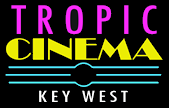Chasing Trane
Front Row at the Movies by Shirrel Rhoades
[mr_rating_result]The other night, I was listening to “A Love Supreme,” often ranked as the greatest album by jazz master John Coltrane. Recorded in 1965, it exemplifies an increasingly spiritual dimension in his music.
“It opens with the auspicious banging of a gong and is followed by the simple, hypnotic repetition of one of the most recognizable four-note riffs in Western music, joined by the piece’s title sung like a mantra. This four-part suite with the quartet reflects Trane’s belief that everything is seamlessly and infinitely interconnected.”
John William Coltrane (September 23, 1926 – July 17, 1967) was an American jazz saxophonist, bandleader and composer. He is considered one the most influential figures in 20th-century music. In 2007, he received a special posthumous Pulitzer Prize for his contribution to jazz.
Born in Hamlet, North Carolina, Coltrane moved to Philadelphia to study music. He used the G.I. Bill to enroll at the Granoff School of Music, studying Music Theory with jazz guitarist and composer Dennis Standole. He also took saxophone lessons with Matthew Rastelli, a teacher at the school.
Trane (as he was called) moved from bebop to free jazz. He led at least fifty recording sessions during his career. Also, he appeared on many albums by other musicians, such as trumpeter Miles Davis and pianist Thelonious Monk.
Although he started on alto saxophone, he began playing tenor saxophone (the instrument he became known for playing) in 1947 with Eddie Vinson. In the early 1960s, during his contract with Atlantic records, he also played soprano saxophone.
Trane was fanatical about developing his craft. He practiced “25 hours a day,” joked his friend, saxophonist Jimmy “Little Bird” Heath.
I also like “Blue Train,” the 1957 studio album that’s Coltrane’s only session as leader for the label. It’s an early example of Trane’s signature “sheets of sound,” a term coined by journalist Ira Gitler and the most quoted phrase in Trane’s career.
“Blue Train” is considered his best album from the late ‘50s. Four of its five tracks are original Coltrane compositions. The title track has become a standard.
In 1957, Coltrane had a religious experience that helped him overcome his heroin addiction and alcoholism. “At that time, in gratitude, I humbly asked to be given the means and privilege to make others happy through music,” he wrote in the liner notes of “A Love Supreme.”
If you are a jazz aficionado, you will want to catch the showing of “Chasing Trane: The John Coltrane Documentary” at Tropic Cinema.
Directed by John Scheinfeld, “Chasing Trane” is a “comprehensive, engrossing … and worshipful” look at the jazz musician. It features never-before-seen home movies and once-lost studio footage of Coltrane and his band (discovered in a California garage during the production of this film).
Known for his music-themed documentaries, Scheinfeld is the filmmaker behind “Reinventing Elvis: The ’68 Comeback,” “What the Hell Happened to Blood, Sweat & Tears,” “Sergio Mendez in the Key of Joy,” and “Herb Alpert Is …”
As the Boston Globe describes the doc: “‘Chasing Trane’ has two great virtues. One is Denzel Washington reading excerpts from Coltrane’s writings. He’s an inspired choice. Somehow that majestic, reedy voice evokes the character of Coltrane. The other virtue is home-movie footage. Coltrane, in his person no less than in his music, always seemed so imposing, probably the closest jazz has come to a biblical figure. Here we get to see him relaxed, casual, not searching for that somewhere else but happily right there. The last thing we see before the credits, he’s outside with two of his sons. He mugs for the camera, breaks into a grin, bows. It’s absolutely glorious.”
In addition to Denzel Washington standing in for the voice of John Coltrane, you will find his son Ravi Coltrane, Reggie Workman, Ashley Kahn, Sonny Rollins, and Carlos Santana speaking as themselves.
Coltrane’s friends, children, and fellow musicians, as well as such fans as former President Bill Clinton (a saxophonist himself), and academic Cornell West add to the narrative.
The main thing for me was that Scheinfeld weaves John Coltrane’s music “through virtually every frame” of the film. A pleasure to hear as backdrop to his biography.
Email Shirrel: srhoades@aol.com


Ratings & Comments
[mr_rating_form]